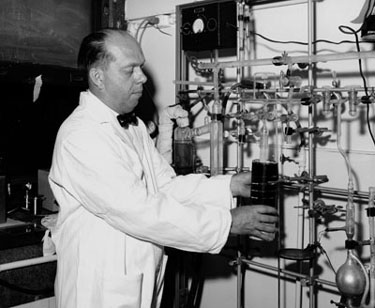
1913–2004
-
Department of Terrestrial Magnetism, staff member (1939-1941, 1946-1953)
-
Geophysical Laboratory, director (1953-1971)
-
Carnegie Institution of Washington, president (1971-1978)
-
B.S. Chemistry, Washington State University, 1933
-
M. A. Physics, Washington State University, 1935
-
Ph.D. Nuclear Physics, University of California Berkeley, 1939
-
D.Sc. Yale University, 1964
-
D.Sc. Southern Methodist University, 1969
-
D.Sc. Tufts University, 1976
-
D.Sc. Duke Unversity, 1981
-
D.Sc. University of Pittsburgh, 1982
-
National Academy of Sciences, board of directors
-
American Geophysical Union, president
-
American Physical Society, fellow
-
Geological Society of America, fellow
-
Mineralogical Society of America, fellow
-
Distinguished Civilian Service Medal (U.S. Navy)
-
Vannevar Bush Public Service Award (National Science Foundation)
-
National Medal of Science
-
Public Welfare Medal (National Academy of Sciences)
-
Kalinga Prize (United Nations Educational, Scientific, and Cultural Organization)
-
Science Achievement Award (American Medical Association)
|
Dr. Philip Abelson’s career at the Carnegie Institution of Washington’s Deparment of Terrestrial Magnetism began in 1939 when he joined as a staff member with specialties in chemistry and physics. He was recruited by Merle Tuve to work on cyclotron development. Abelson served as "assistant physicist" for two years. This advantageous alignment jump started his career, as in 1940, he succeeded in helping to discover the element Neptunium. Neptunium, a metal byproduct of uranium, became the ninety third element in the periodic table. Abelson’s co-discoverer, Edwin M. McMillan, later won the Nobel Prize for the finding. |
|||
|
|
|||
|
|||
|
|
|||
|
In 1953, Abelson left the Department of Terrestrial Magnetism to become the director of the Geophysical Laboratory. During his time there, he discovered the ability of amino acids to survive in fossils at low temperatures for millions of years. His work was extremely instrumental in starting an organic geochemistry program at the Laboratory. In 1962, Abelson became the editor of the popular journal Science. The position allowed him to not only chronicle laboratory advances, but to write over five hundred editorials on topics like medical research, national energy policies, microbiology, food, electronics, healthcare, and earth science. His unwavering dedication helped to increase Science’s circulation from 75,000 to 155,000 by his retirement as editor in 1984. Abelson served as director of the Geophysical Laboratory until 1971 when he stepped up to become President of the Carnegie Institution of Washington until 1978. Abelson was renowned for his scientific contributions and respected for his integrity. |
|||
|
|
|||
|
References:
Further Reading:
|

